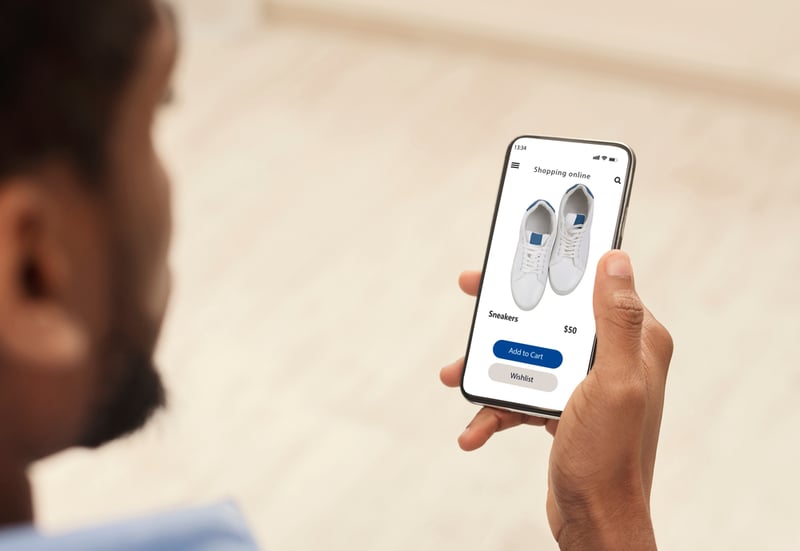Thousands of people plan to buy something from different stores each day. Customers typically visit the mall and see their favorite shop, looking at the displays and designs. If something entices them, the more likely they'll purchase the item. However, nowadays, most consumers are visiting eCommerce stores.
When designing an eCommerce website, as a business owner, you want to ensure that it's easy for customers to navigate and find the products they're looking for. This means prioritizing web design. Web design primarily involves the site's user interface (UI), including the layout, visuals, and ads.
You must ensure that your site is visually appealing and doesn't contain any distractions that will get in the way of users interacting with your brand. The more user-friendly it is, the more likely customers will stay on your site longer, eventually leading to higher sales.
If you're interested in learning how to guarantee conversions, this article discusses the top website design tips for your eCommerce site.
What Makes an Excellent eCommerce Website Design?
Interface or ease of use
The user interface is the first thing people notice when visiting a website. It's what gives the first impression, and it's essential to remember that your users are likely less tech-savvy than you think.
You want to ensure your UI is intuitive and easy to use, even for people less familiar with computers, because your users could be grandparents or young children. This aspect relates to the site's navigation, where people can quickly accomplish tasks like finding the needed product.

Visual design
Make your site more visually appealing for the eyes. Visual design is another way to improve user experience. While some websites might find this less important than others, such as those focused on educational content that may not need this as much, most will benefit from having a coordinated color scheme.
Adaptability
Adaptability is important because it allows your website to function at its best. An adaptive website design can change based on its environment.
For example, if a customer has a slow internet connection, you can reduce the data your website needs to load, such as using a smaller image. If they have a tablet, you can make your content more readable by making it larger and more colorful.
eCommerce Website Design Tips for Maximum Conversions
1. Keep things simple
Having a simple and manageable website means it should be easy to use and organized. Using categories for products or sorting them into catalogs allows shoppers to quickly browse for what they need, enhancing their user experience.
You want them to find the products they're looking for without getting distracted by unnecessary elements like colors, fonts, or text.
Messaging should also be simple. Convey what you do and why it matters without being repetitive or boring. Functionality should be a key component as well. Make sure there are no confusing steps that lead users astray from their goal of purchasing.
2. Ensure it's mobile-friendly
In today's world, people are spending more time on their phones. So if you want to capture the attention of potential customers, your website needs to be optimized for mobile devices. Mobile-friendly websites allow users to browse your products quickly and easily from their portable devices.

One thing to remember is that a website can appear differently depending on the person's device. If a site isn't optimized for mobile use, the UI looks messy, causing potential customers to leave immediately.
Mobile sites also allow you to collect data from visitors, like their location or the products they're most interested in seeing. This strategy helps you determine which products are selling well and which aren't, allowing you to adjust your marketing strategy accordingly.
3. Checkout should be simple and easy
The checkout process is crucial to customer satisfaction because it's one of the last hurdles between you and your customer getting what they want. To get them through this final step, you must ensure that it's as simple as possible.
You can't assume that your customers can navigate your website well. So, you must ensure they understand what they're doing and where they need to go. Your checkout process should be clearly labeled with instructions and tell customers exactly what information is required for each step.

4. Allow different payment options
Not every user is going to want to pay with the same method. Some people prefer credit cards, while others may opt for GCash, GrabPay, or even Cash-on-Delivery (COD). You have to offer different payment options to accommodate your customers' needs.
Optimize your payment options page by ensuring that it is customized according to the feel of your eCommerce store for a seamless experience. Consider including the logos of your available payment methods or a "Cancel" option, so users feel in control of their purchases.
5. Have a clear call-to-action (CTA)
Clear CTAs improve conversions by helping visitors understand what they're supposed to do when they visit your site. If you don't have CTAs, your visitors will likely be confused about what they should do next. In addition to prompting visitors to take action, clear CTAs also help increase conversions by providing a sense of urgency.
For example, if you have an offer on your website that expires at midnight tonight, it makes sense to add a CTA that says, "Buy Now" or "Sign Up Today." It'll give visitors a sense of urgency and incentive when they act now rather than wait until later.
Make sure your CTA design stands out against the background of your website. The colors should be bright and lively enough to attract customers. It's best to place it toward the bottom of the page.
You can also place social sharing buttons at the bottom or beginning to provide visitors with an option to share what's on your page or be guided toward a conversion.
6. Include product reviews
Product reviews are a crucial part of the purchasing process. They help you understand what your customers need, what they like, and how they use your products. You also learn about problems or issues. This information is beneficial in deciding whether or not to continue selling the product.

7. Have product descriptions
Product descriptions are an essential part of any eCommerce website because they're one of the main ways to communicate with your customers and get them to buy. More than just a list of features and benefits, they're a way to create a sense of urgency around the purchase.
For example, you're selling a product only available in limited quantities or on a time limit. In that case, this could reflect in your product description with language like "only X items left!"
The Key to Conversions is eCommerce Website Design
Whether through adding CTAs, creating a sense of urgency, or offering discounts, the goal is always to convert prospects into buyers. Having plenty of customers is always great, but what good does it do if they're not generating sales?
You shouldn't ignore other parts of running an eCommerce website. Visuals and adaptability are key to creating an easy-to-use interface that will encourage users to do business with you.
If you're looking for an eCommerce website templated according to best practices and trends for easy navigation and activation, RUSH eStore is for you. Our rich and advanced design settings allow you to brand your white-label website and make it your own. For more information, visit our page and book a demo today!

Product Marketing Manager at RUSH Technologies
RUSH's Product Marketing Manager, and a specialist in brand strategy, campaigns, and communications management, and is here to help everyone make the most of digital and social channels. When she's not working, she's sleeping...or up to something creative, or playing a sport!

Gabrielle Calpo
Product Marketing Manager at RUSH TechnologiesRUSH's Product Marketing Manager, and a specialist in brand strategy, campaigns, and communications management, and is here to help everyone make the most of digital and social channels. When she's not working, she's sleeping...or up to something creative, or playing a sport!









